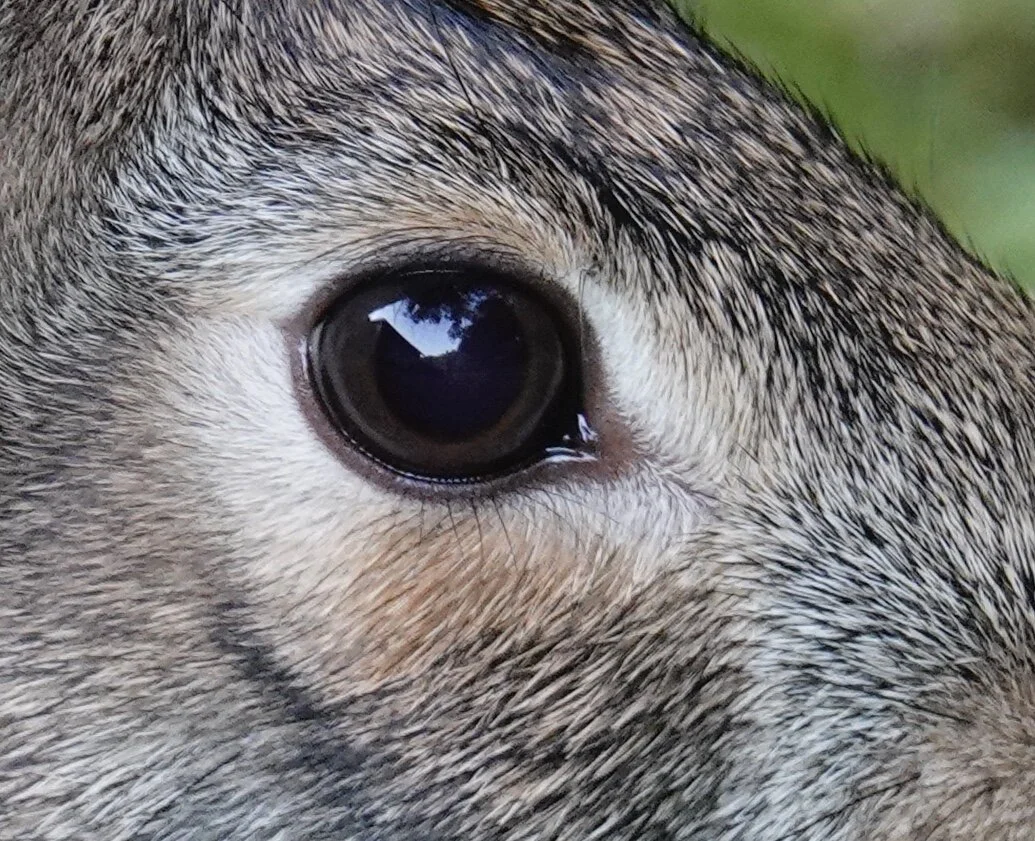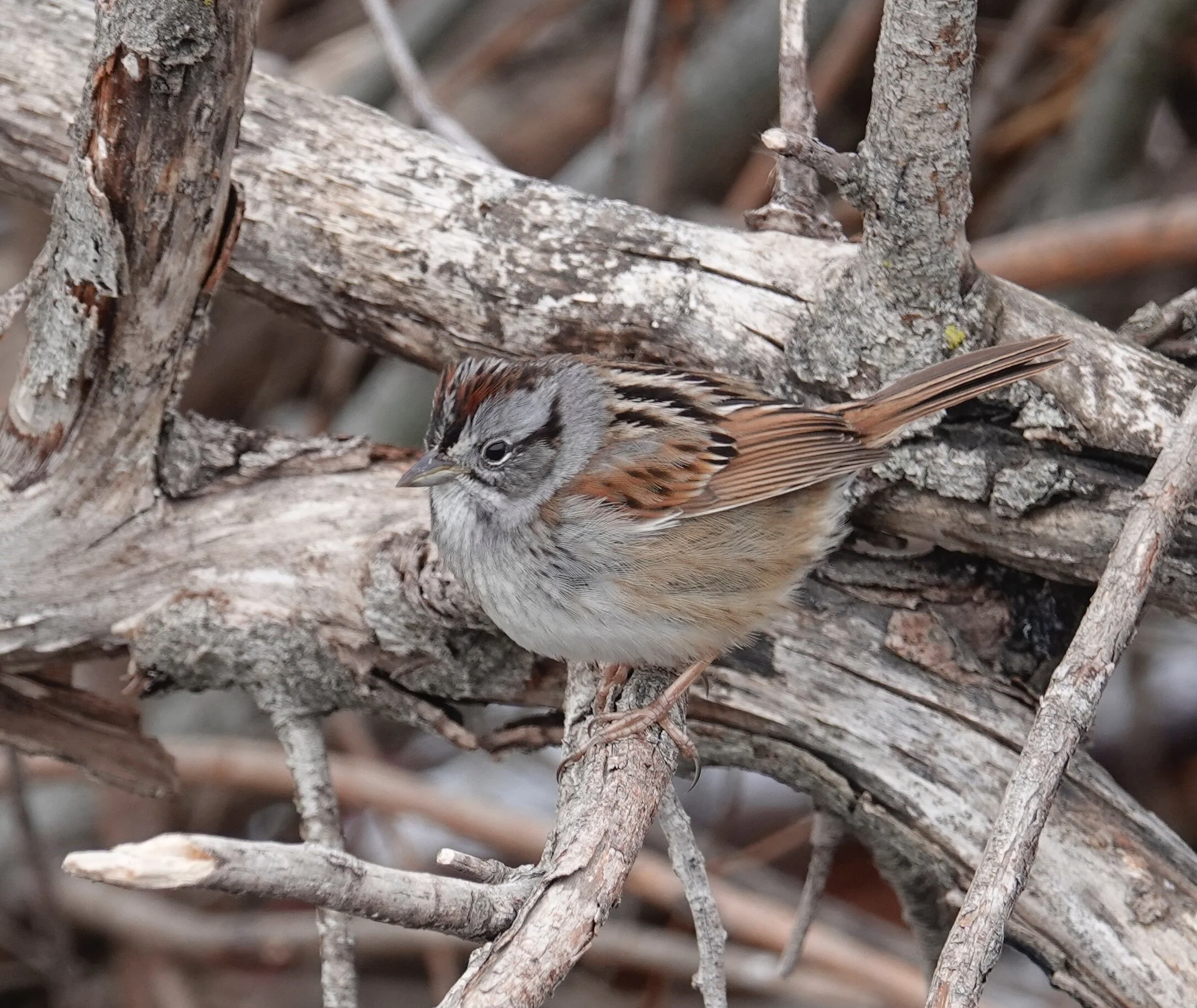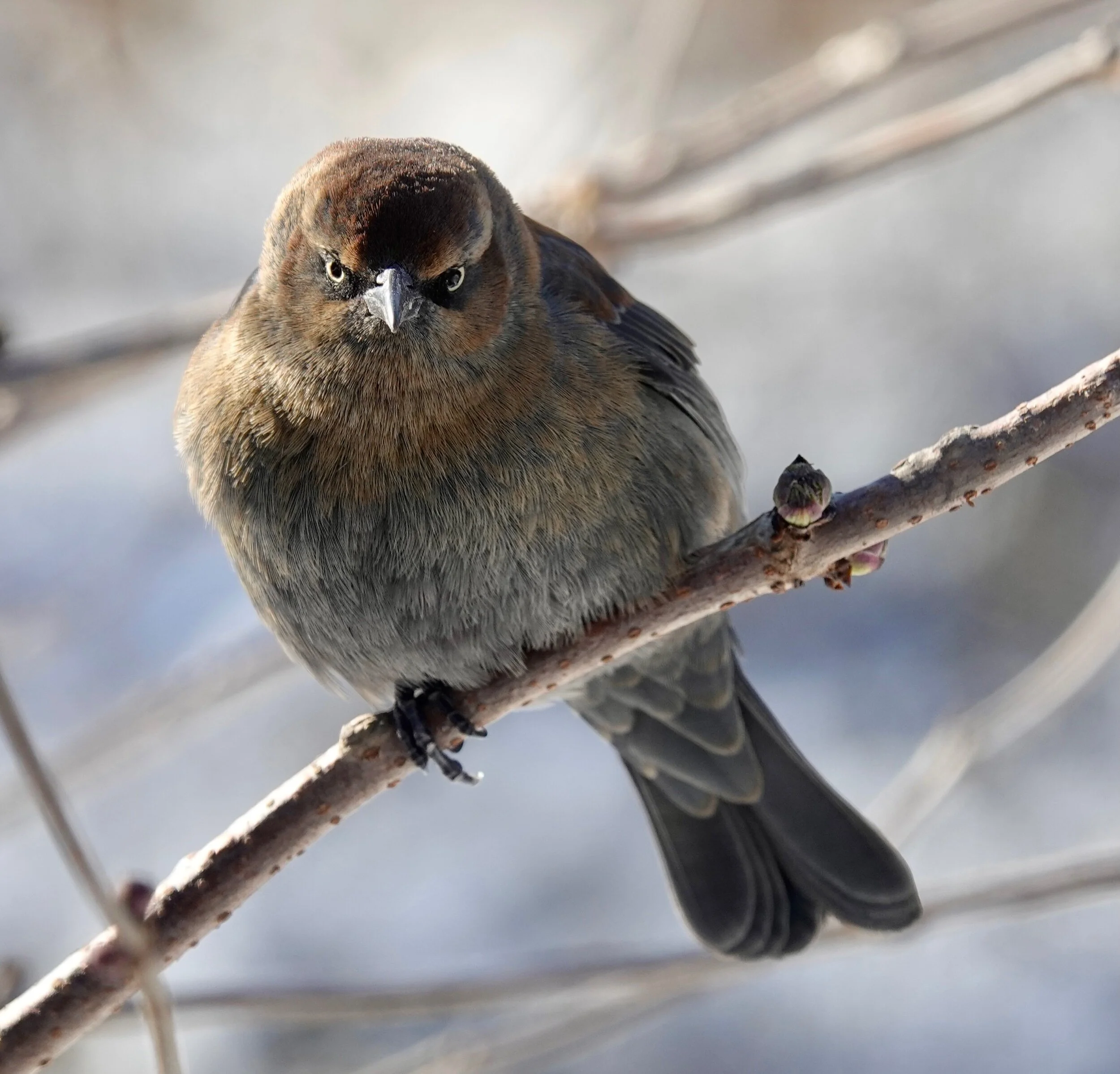Naturally
A house sparrow missing his tail was in the yard. If Jim Rockford were still around, I'd have him put a tail on the bird. Dark-eyed juncos are snowbirds. Old Man Winter gave them a lot of responsibility, but they came through with 8 inches of the white stuff in the recent storm. Some red-bellied woodpeckers take their red bellies everywhere. Others, not so much. The red belly isn't always easily noticed. A friend from Maine brought up the chestnut colors on the south end of a northbound white-breasted nuthatch. A nervous rooster pheasant in the yard behaved hawkwardly. Its presence made a nice birthday pheasant for my wife. A cat sat on a warm rock I'd placed into a heated dog dish I've convinced the birds is a birdbath.
Squirrels left footprints in the snow with their larger hind feet appearing in front of the smaller front feet. Rabbit tracks resemble those of squirrels except the front feet aren't paired with hind feet and form a triangular shape. I can tell where rabbits have fed as twigs and shrubs show clean diagonal cuts.
Alberta rats
Norway rats are destructive — they can carry disease and eat crops. For over 70 years Alberta has been determined to stop rats from calling Alberta home, concentrating efforts along the Saskatchewan border, banning the animals as pets, and investigating any hint of a rat inside the province. Out of 481 rat reports in 2020, 26 were actual rats. About half of the sightings were muskrats. Rats ride into Alberta on vehicles.
Q&A
Barb Lamson of Mankato asked where squirrels live in the winter. Do they stay in their tree nests? How do they stay warm? Squirrels live in two types of structures: Dens, which are holes in trees and dreys, which are densely packed masses of sticks and leaves typically located high in the forked branches of large trees. Dens, insulated with dried leaves and other materials, are preferred for winter and brood chambers, but dreys are sturdy and weather-resistant. Dreys require more maintenance. Squirrels fatten up as much as possible, grow a thicker coat that helps keep them warm, and use shivering to generate body heat. In cold weather, squirrels might share a nest in order to share body heat, but this can lead to disputes.
"Are birds at feeders more likely to fall victim to predators?" According to a Cornell Laboratory of Ornithology study, avian predators are attracted to busy feeders, but cats aren't more active at feeding sites. Evidence suggested feeders may provide safe havens from predation. There are more birds to sound alarms. Feeders may reduce foraging time and exposure to predators.
"Why do beavers build dams?" A dam, made of trees and mud, blocks or slows water flow in a river or stream, creating a pond. They build lodges in those ponds, which provide protection from predators like wolves, coyotes or mountain lions. They offer warm places to sleep and raise young. Lodges are built of sticks, grasses and mud, and have underwater entrances. Ponds are important habitats for other wetland animals.
"What's the white covering on trees called?" If it's not snow, it could be rime ice that happens in areas of dense fog when fog droplets come in contact with surfaces below freezing. Or hoarfrost, which is similar to dew and occurs on cold, clear, calm nights when water vapor freezes onto below-freezing surfaces. Hoar refers to the frosty coating, coming from the word hoary, which means white or gray with age.
Diane Norvell of Owatonna asked if it's unusual to see robins in Minnesota in January. The great poet Anonymous wrote, "The north wind doth blow, and we shall have snow, and what will the robin do then, poor thing? He’ll sit in a barn, and keep himself warm, and hide his head under his wing, poor thing!" A small percentage of our robins spend the winter in Minnesota. And why not? It's a winter wonderland. Wintering robins become gregarious, finding security in flock numbers and sleeping in conifers to stay warm at night. They frequent areas with open water. Robins can survive cold weather if they find enough food to stoke their furnaces. They feed on fruits and berries of hackberry, crabapple, hawthorn, juniper, sumac, mountain ash and buckthorn. Robins that migrated south wander north into areas when and where the temperatures average about 37° and earthworms are emerging. Our wintering emotional support robins follow the food. They move around in search of food and shelter.
Thanks for stopping by
"This is one time where television really fails to capture the true excitement of a large squirrel predicting the weather." — Phil Connors (played by Bill Murray) in "Groundhog Day."
"In the depth of winter, I finally learned that within me there lay an invincible summer." — Albert Camus
Do good.
©Al Batt 2021
A red-bellied woodpecker with a red belly. Photo by Al Batt
This is how squirrels find acorns under the snow. They use a dowsing or divining rod.
For some reason, this House Finch couldn’t look me in the eye.




































































